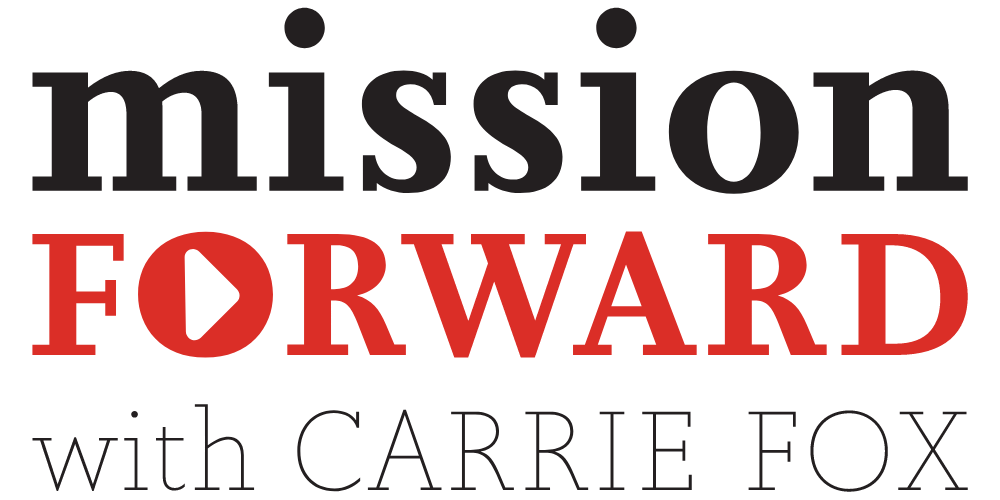Healthy Communication, Part 2.
This article is part of Finding the Words, a newsletter that delivers practical insights on the day’s issues.
Last week, I prompted you with five practices to support healthy communications—and I was so glad to hear how you used these tips in conversations with your colleagues, teams, and even family members. This week, I’ll serve up part 2 of my healthy communications checklist, and invite you to put these four additional actions into practice over the coming days.
As I shared last week, it's common to feel at a loss when you need to communicate critical information, and you don’t feel equipped to do so. With these healthy communication skills, you can ensure that you get your message across, while also building deeper connections and trust with your audience.
So, onto this week’s list:
6. Do You Communicate Through a Service Mindset?
Humans process information in many different ways, and the people you meet with this week may not process information in the same way you do. So, prepare your receiver (the listener) for your message by setting up your audience for your message. I call this “priming the audience.”
Rather than come out hot with difficult news or call a meeting without any context, you can prime your audience by acknowledging the topic openly and forthrightly. For instance, “I understand some of you are feeling frustrated by the changes at our organization, and I feel it too. I believe there can be a way through this tough time together, though. Today, I’ll share what I see that's working, I'll share some suggestions for how we can improve, and before we wrap, I’ll ask for some feedback on how I’m doing, OK?" Approaching your communications with a service mindset (“It’s not what you say, it’s what people hear”) can help ensure that your audiences can understand, process, and share the information you need them to.
Try it: Rather than attempt to dumb down your message or sandwich tough news between two compliments, consider how you can honestly and forthrightly acknowledge and address a challenging issue head-on.
7. Do You Seek to Remove Barriers?
If you’re a principal responsible for communicating messages to your parents, teachers, and students, or a small business owner communicating a change in benefits to your workforce, how you communicate the message matters: it will either build trust and move people to action, or it will fuel fear and distrust. How you communicate matters. As you prepare to deliver a difficult message, consider what communication barriers might be in the way of them hearing you.
Try it: Rather than burying your own lead, think about what you most need your audience to hear and literally start with, “What I want you to hear today is this…” If you’re able to be clear and direct in your communication and stay focused on delivering your message in clear and relatable language, you’ll help ensure that you are communicating in ways that the widest audience can access.
8. Are You OK Saying I Don’t Know?
As humans, we want to know and believe in each other, and in those who are communicating important messages to us. To earn and maintain trust, and move people to action, be mindful of your communications approach. For instance, it’s OK to say that you don’t have all the answers. It’s OK to say that information is evolving, and you’ll share more as you have it. This is a far more effective communications tactic than being definitive in a message, only to have to change the message 24 hours later.
Try it: Being honest and humble in your communication builds trust and shows your character as a leader. (More on building your character in this post.)
9. And Finally, Do You Listen as Often as You Talk?
The best way to become a trusted messenger is to listen to your audience. Get closer to understand how your audience is processing the information you share. See if your messages can, in fact, be repeated back to you—in your words or theirs. And remember, trust is a long game: You may win some early trust, but to maintain that trust, you need to maintain open lines of communication.
Try it: As you head into the back end of this week, focus on listening twice as much as you talk, and make note of what you learn in the process.
Bottom line: Communicating through challenging moments can be made easier when we focus on the heart of the message, and the people on the receiving end. And if the message just feels too much to manage, reply to this message. I’d love to connect with you about how to navigate through your own complicated message.
This post is part of the Finding The Words column, a series published every Wednesday that delivers a dose of communication insights direct to your inbox. If you like what you read, we hope you’ll subscribe to ensure you receive this each week.






